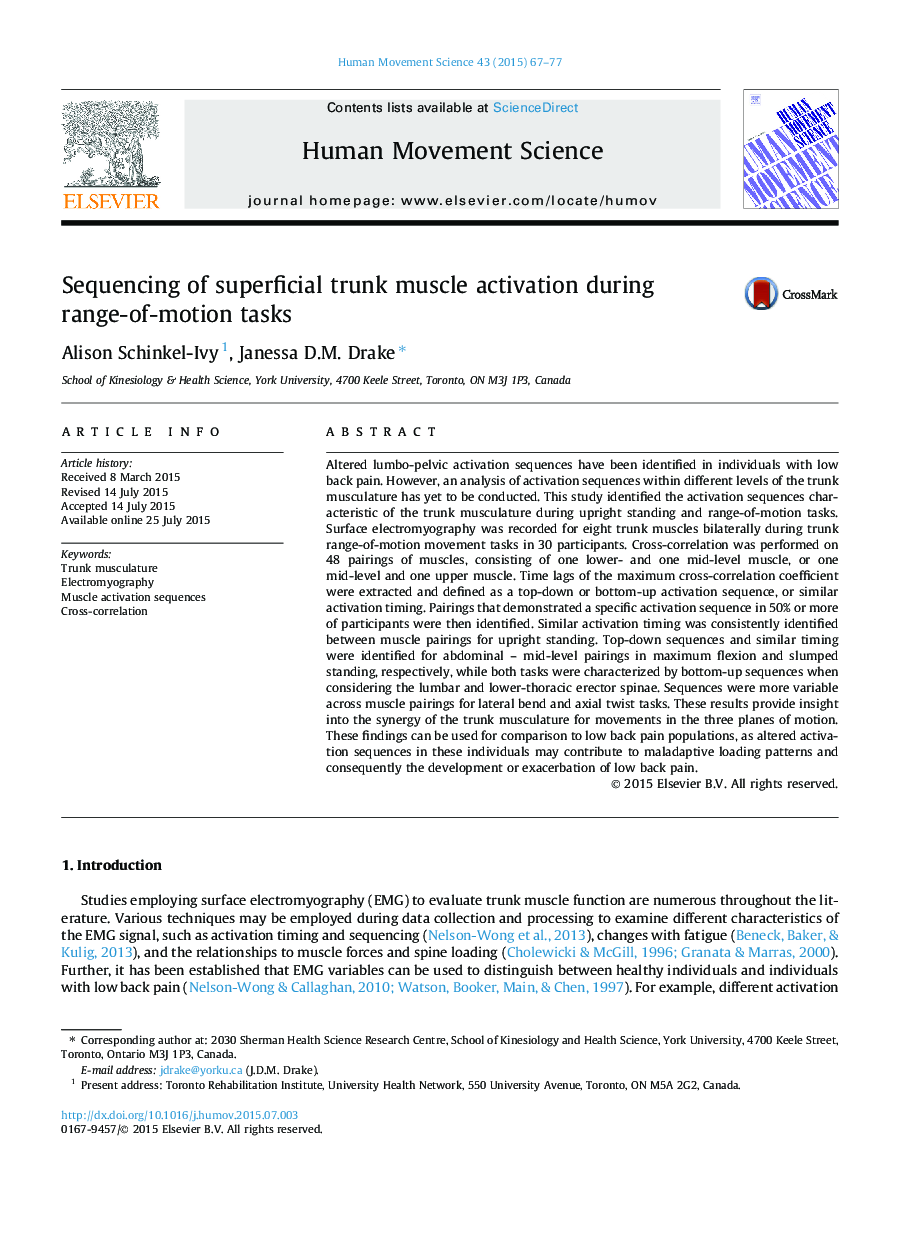| Article ID | Journal | Published Year | Pages | File Type |
|---|---|---|---|---|
| 928264 | Human Movement Science | 2015 | 11 Pages |
•Cross-correlation was used to identify muscle activation sequences in the trunk.•Consistent sequences were identified based on task and the level of the muscles.•Results provide insight into muscle synergy during standing and trunk movement.•Results may be used to identify altered activation patterns in low back pain.
Altered lumbo-pelvic activation sequences have been identified in individuals with low back pain. However, an analysis of activation sequences within different levels of the trunk musculature has yet to be conducted. This study identified the activation sequences characteristic of the trunk musculature during upright standing and range-of-motion tasks. Surface electromyography was recorded for eight trunk muscles bilaterally during trunk range-of-motion movement tasks in 30 participants. Cross-correlation was performed on 48 pairings of muscles, consisting of one lower- and one mid-level muscle, or one mid-level and one upper muscle. Time lags of the maximum cross-correlation coefficient were extracted and defined as a top-down or bottom-up activation sequence, or similar activation timing. Pairings that demonstrated a specific activation sequence in 50% or more of participants were then identified. Similar activation timing was consistently identified between muscle pairings for upright standing. Top-down sequences and similar timing were identified for abdominal – mid-level pairings in maximum flexion and slumped standing, respectively, while both tasks were characterized by bottom-up sequences when considering the lumbar and lower-thoracic erector spinae. Sequences were more variable across muscle pairings for lateral bend and axial twist tasks. These results provide insight into the synergy of the trunk musculature for movements in the three planes of motion. These findings can be used for comparison to low back pain populations, as altered activation sequences in these individuals may contribute to maladaptive loading patterns and consequently the development or exacerbation of low back pain.
